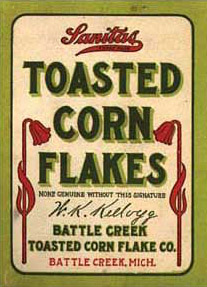
Image via Wikipedia
During economic downturns, history has proved again and again that while most companies cut back, it is the smart ones that advertise. More sales have been rung up by companies that out-advertised their competitors. Consumers don’t go away during tough times, they merely become more selective in their choices. If the advertising presence for a company that consumers have come to rely on has simply vanished, what message are they sending their customers? While your competitors are reducing their advertising budget, augmenting yours will increase your reach over your customers and theirs.
Here are a few examples of how increased advertising budgets during the Great Depression helped companies weather stormy times:
In the late 1920s there were two dominant players in the packaged cereal market – Kellogg and Post. While Post cut its advertising expenditure, Kellogg doubled theirs, aggressively going after the radio market to advertise its new product, Rice Krispies. The end result: Kellogg’s sales rose more than 30% over the next few years, allowing it to dominate the market until this day.
Aggressive advertising turned the tide for Camel cigarettes whose top position began to slip in the 1930s in favor of Lucky Strike and Chesterfield. Aggressive advertising made the difference for Camel when they smoked the competition and regained the top spot in 1935.
Proctor and Gamble is a great example of how innovation and increased expenditure not only helped the company sail their way through the Great Depression, but changed the entire medium as well. Using radio, P&G’s president, Richard Deupree, (who believed people continued to purchase household products such as soap), decided to create serial programming that did not focus on products, but were clearly sponsored by them. This was the start of daytime Soap Operas.
During the 1930s, Chrysler zoomed past Ford as the country’s number two automaker with the introduction- and heavy advertising- of its new value brand, Plymouth. This new introduction was one of the only successful car brands during the Great Depression.


















